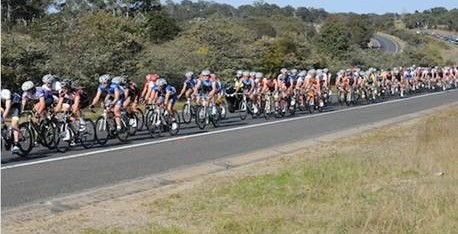The Sydney Olympics were an undoubted success – described as the best ever by the then president of the International Olympic Committee, Juan Antonio Samaranch. As in London, big promises were made for the legacy that would follow the so-called greenest ever Games.
While the London 2012 active travel programme aims to use the power of the Games to encourage people across the UK to walk and cycle more, in Sydney, the same sort of promises were not backed up by the necessary investment in city infrastructure. The Games did not “inspire a generation” to start riding their bikes and the city’s historically low cycling rates were not improved.
Twelve years on, however, things are changing. With the backing of city leaders and substantial capital investment, Sydney has ambitious plans to make 10% of journeys in the city to be by bike.
Fiona Campbell, Sydney council’s manager of cycling strategy, spent many years as an independent cycling campaigner before joining the administration.
Since joining the council, Campbell has helped kickstart pro-cycling change with the support of an independent and relatively newly elected city mayor. This has been backed with substantial capital investment – almost £50m over five years.
After joining the council, it was clear to Campbell that Sydney faced many transport challenges. Congestion, overstretched public transport, narrow roads and competition for budgets are all issues that UK cities will be familiar with. On top of that was the hostility of Sydney drivers towards cyclists – in Campbell’s experience, worse than anything she had come across on UK roads. These factors contributed to cycling rates below the Australian average and a statistic of only 0.8% of work trips made by bike.
A new approach was required and after a public consultation, the Sydney 2030 blueprint for a greener city was launched, with sustainable transport forming a major part of the initiative. That consultation exercise revealed that the main reasons for not cycling related to fear of traffic and poor facilities, with the solution seen as more cycle lanes, particularly off-road.
As a result, Sydney is working to provide 200km of cycle lanes by 2030, with 55km separated from traffic. Although Campbell admits that segregated cycle lanes are not ideal, with the risk of producing a “them and us” mentality, they have been successful in persuading previous non-cyclists to get out on their bikes. Research done by the council has shown that the likelihood of a resident commuting by bike increases exponentially with the proportion of their commuting trip made possible on a separated bike lane.
The new lanes have been combined with decreased speed limits and extensive junction redesigns which give cyclists priority and improve visibility. One advantage of the new junctions is that there has been a decreased number of accidents involving all modes of transport, not just bikes.
Not everyone has been happy with the changes. Despite overall support for the vision of a greener Sydney, there has been opposition to the implementation, particularly from the media, state government and local businesses. To counter this, Campbell and her team have adopted a “hearts and minds” approach, working with the businesses, using social media, and responding to community needs.
They have run safe cycling courses, given out cycling maps and encouraged “gracious” cycling, providing free bike bells for stretches of shared use pathways. Efforts have been made to keep the local community on board by making the new facilities attractive.
All these measures have combined to produce rapid growth in cycling over two years, with numbers up by an average of 82% across all areas of the city. They have also been able to demonstrate economic benefits through reduced congestion, better health, environmental improvements and savings for public transport. One newspaper reported an increase in property values as a result of the scheme. Even the infamous driver hostility is showing signs of waning.
via PSFK: http://www.psfk.com/2012/07/sydney-gets-non-cyclists-on-bikes.html#ixzz1zcxQoEry













